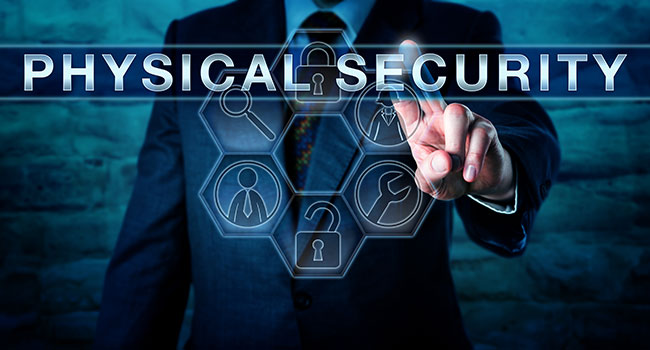
Increase in Physical Security Incidents Adds to IT Security Pressures
A new study shows that many organizations have changed their physical security strategies to address new concerns since the COVID-19 outbreak, explains Dark Reading’s Jai Vijayan.
An increase in physical security incidents since the start of the COVID-19 pandemic may be adding to IT security teams’ workloads at many organizations.
In a recent survey by Pro-Vigil, a provider of remote video-monitoring services, nearly 20% of 124 business operations leaders surveyed said their organizations had experienced more physical security incidents than the prior year. One-third said they believed they will see an increase in these incidents in 2021.
Concerns over physical security has prompted 40% of the organizations in the survey to make changes to their security strategy, including an increase in their use of video cameras and security guards, since the start of the pandemic.
Jeremy White, founder of Pro-Vigil, says some of the changes on the physical security front have a direct impact on IT security teams as well.
“The more physical security that we deploy, the greater the need for cyber security,” he says.
Organizations are aware of the cyber-risks associated with the digital technologies that are increasingly being deployed for physical security and often have strict IT security requirements when deploying them, White said.
“IT security organizations are primarily responsible these days for the deployment and management of not only digital camera systems, but also IP-based access control and many other related products and services,” he said.
Pro-Vigil’s findings are similar to those of a study the Ontic Center for Protective Intelligence commissioned last year. The latter study found many organizations were planning to increase budgets for physical security in 2021 because of COVID-19-related concerns. 43% of the respondents in the Ontic commissioned study said keeping remote employees safe was a challenge, and 36% said the same of their ability to secure physical access to corporate data. 35% expressed concern over reduced physical security headcount as a result of the economy, 33% said managing physical threat data was a challenge, and 32% were worried about physical security threats to company leadership and members of the C-suite.
The Ontic survey also revealed a high-level of concern over threats to business continuity from physical security breaches. Sixty-nine percent of respondents said they expected their organizations would experience irrecoverable financial and reputational damage if a fatality were to occur as the result of a missed security threat. Just as with cyber security, 39% of the respondents in Ontic’s study said COVID-19 had caused them to accelerate plans to modernize their physical security capabilities. 91% felt that a technology-driven industry standard was essential for identifying, investigating, and managing physical security issues.
White says IT teams often have control over the procurement of physical security. As a result, there is a growing need for the IT and physical security teams to work hand-in-hand to ensure physical security technologies are deployed correctly and operate efficiently.
“It’s a shift from physical security management in the past,” he said. “As physical security has shifted from an analogue offering into a more advanced IP-based or digital solution, the greater the requirement for both physical security to learn more about IT and for IT to learn more about physical security.”
The convergence between IT and physical security has been in the making for several years, but it has accelerated recently due to the adoption of the Internet of Things (IoT) and increasingly sophisticated industrial IoT devices at many organizations. Nearly half of the respondents in the Pro-Vigil study, for instance, said they are using modern digital video systems with artificial intelligence (AI) for object recognition.
According to the Cybersecurity and Infrastructure Security Agency (CISA), the trend has “led to an increasingly interconnected mesh of cyber-physical systems (CPS), which expands the attack surface and blurs the once clear functions of cyber security and physical security.”
According to the agency, an organization’s cyber and physical assets together represent a significant risk. “Each can be targeted, separately or simultaneously, to result in compromised systems and/or infrastructure.”